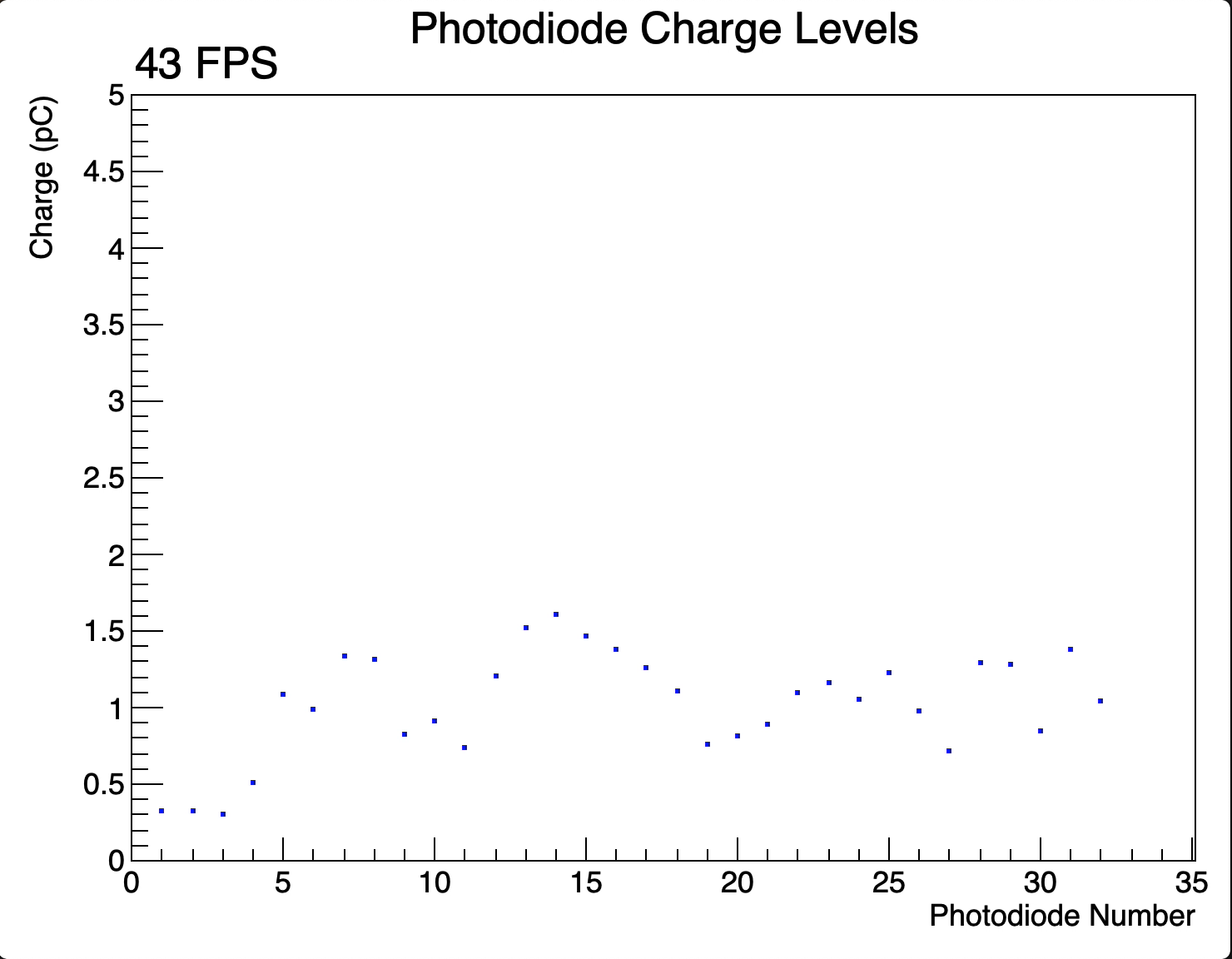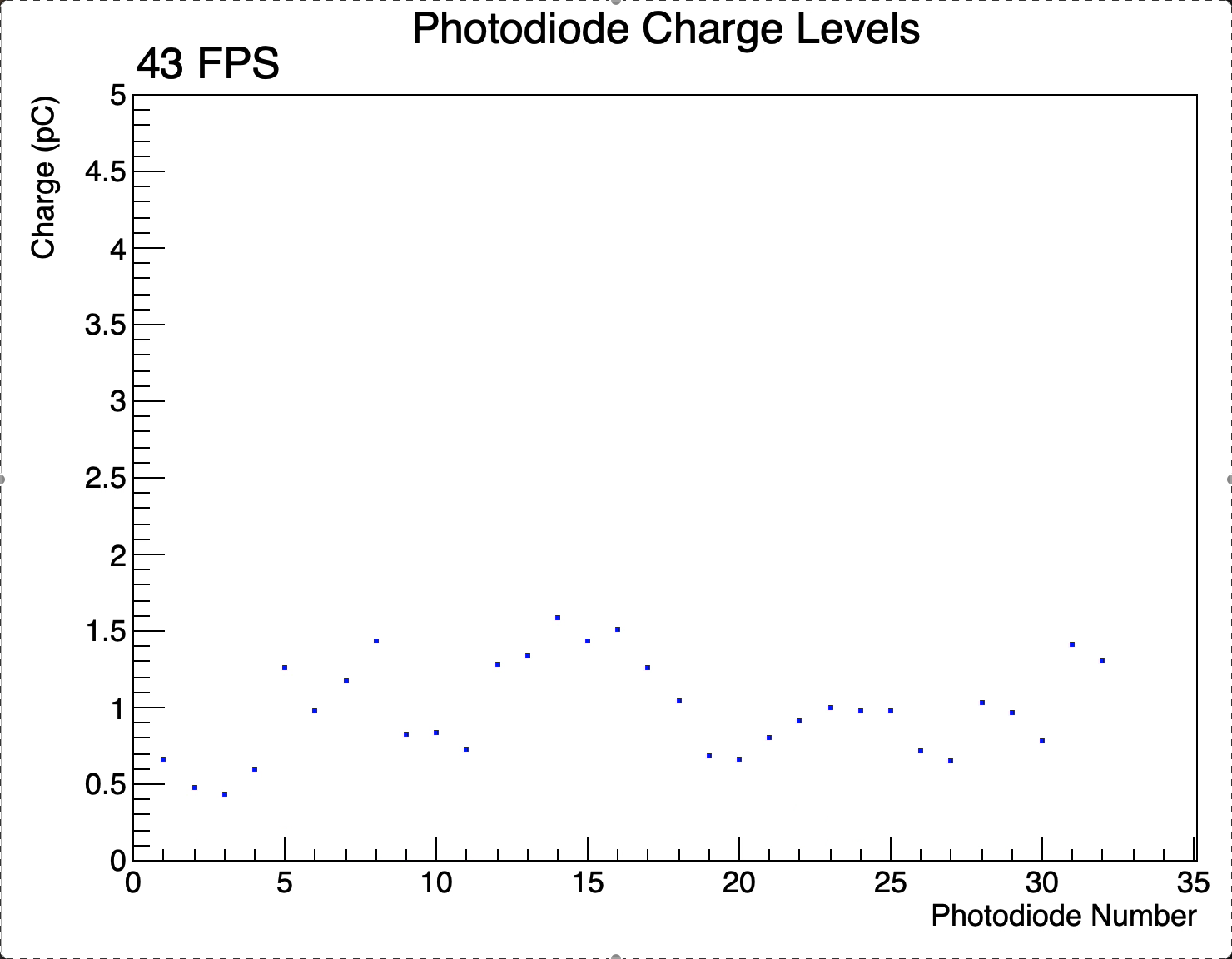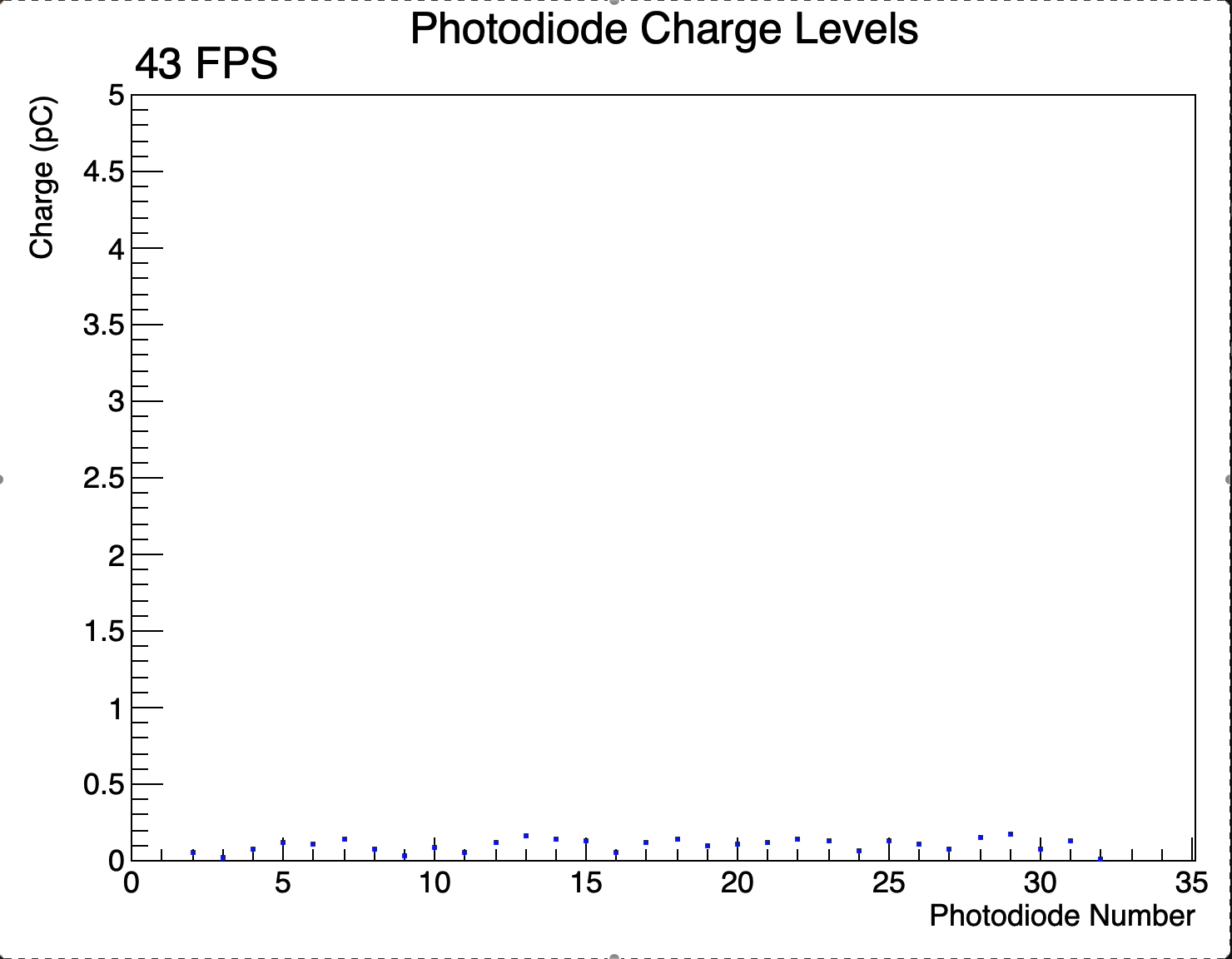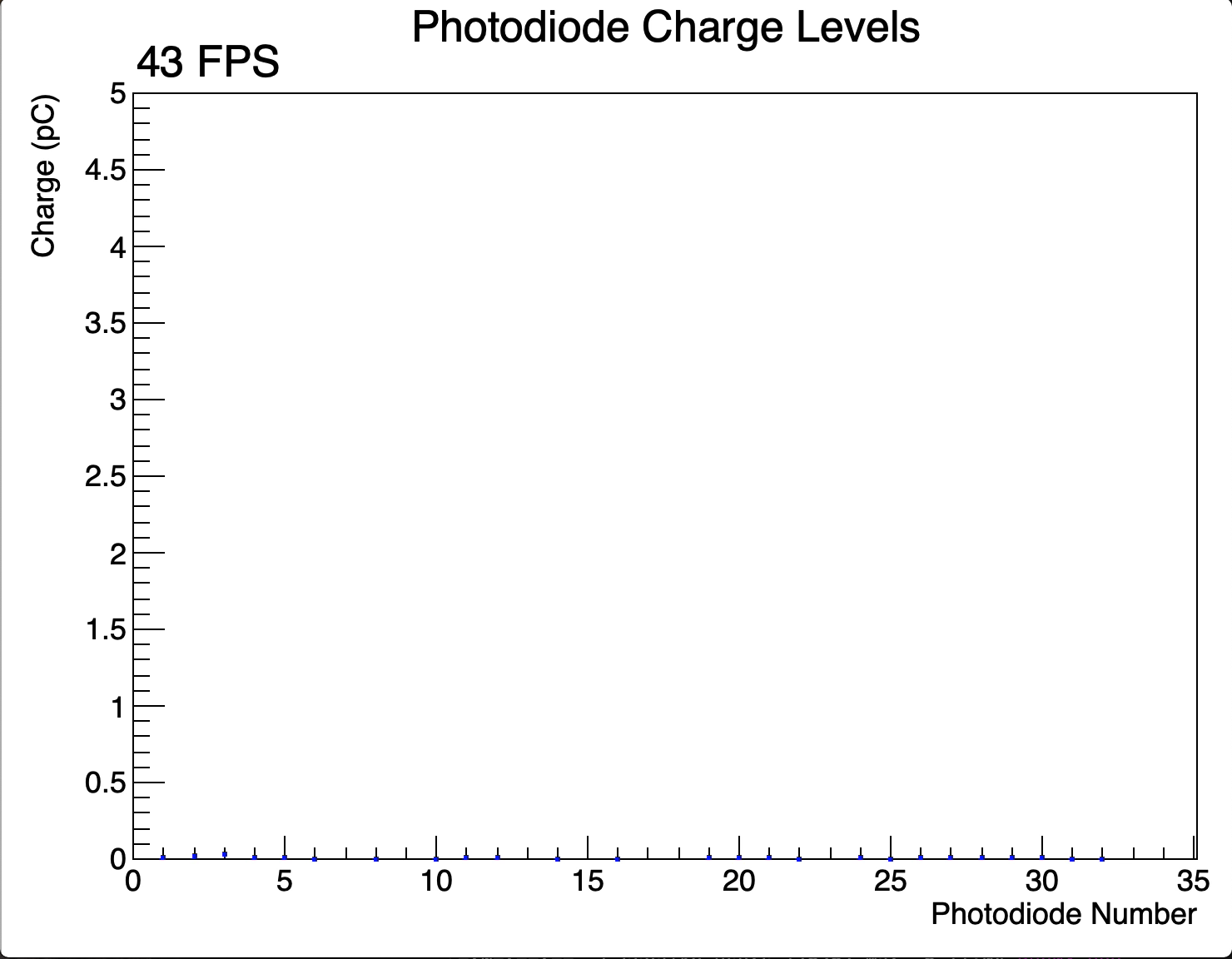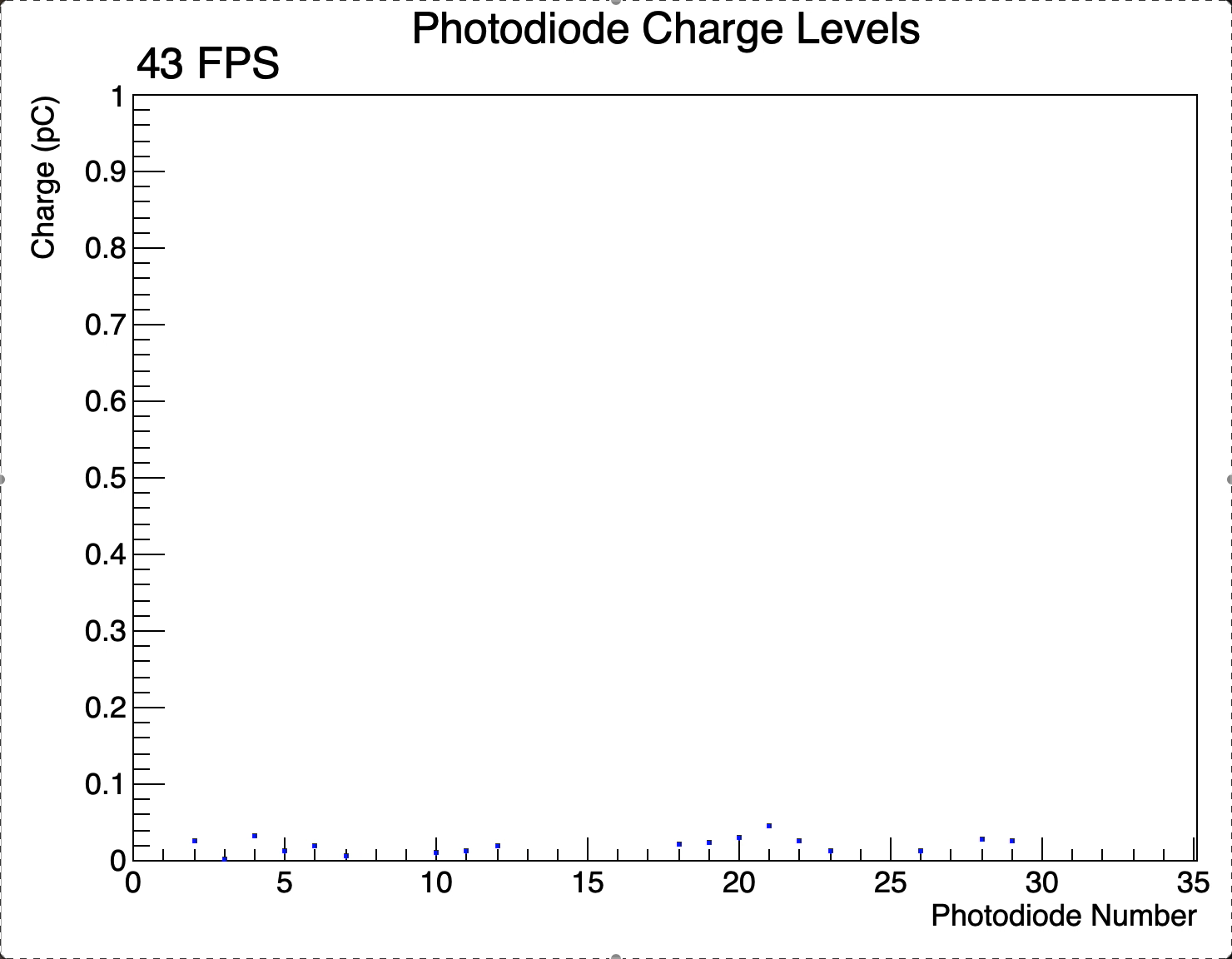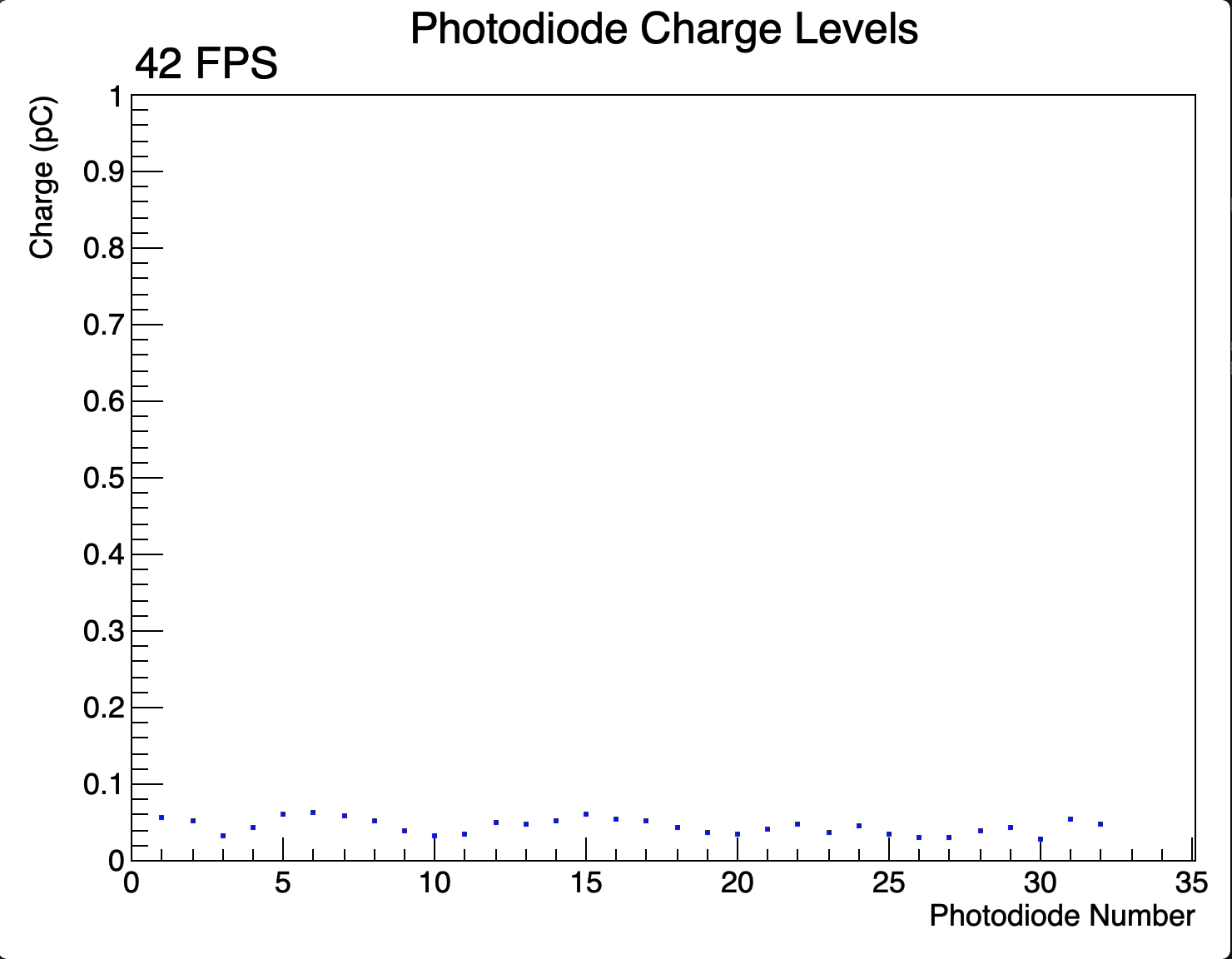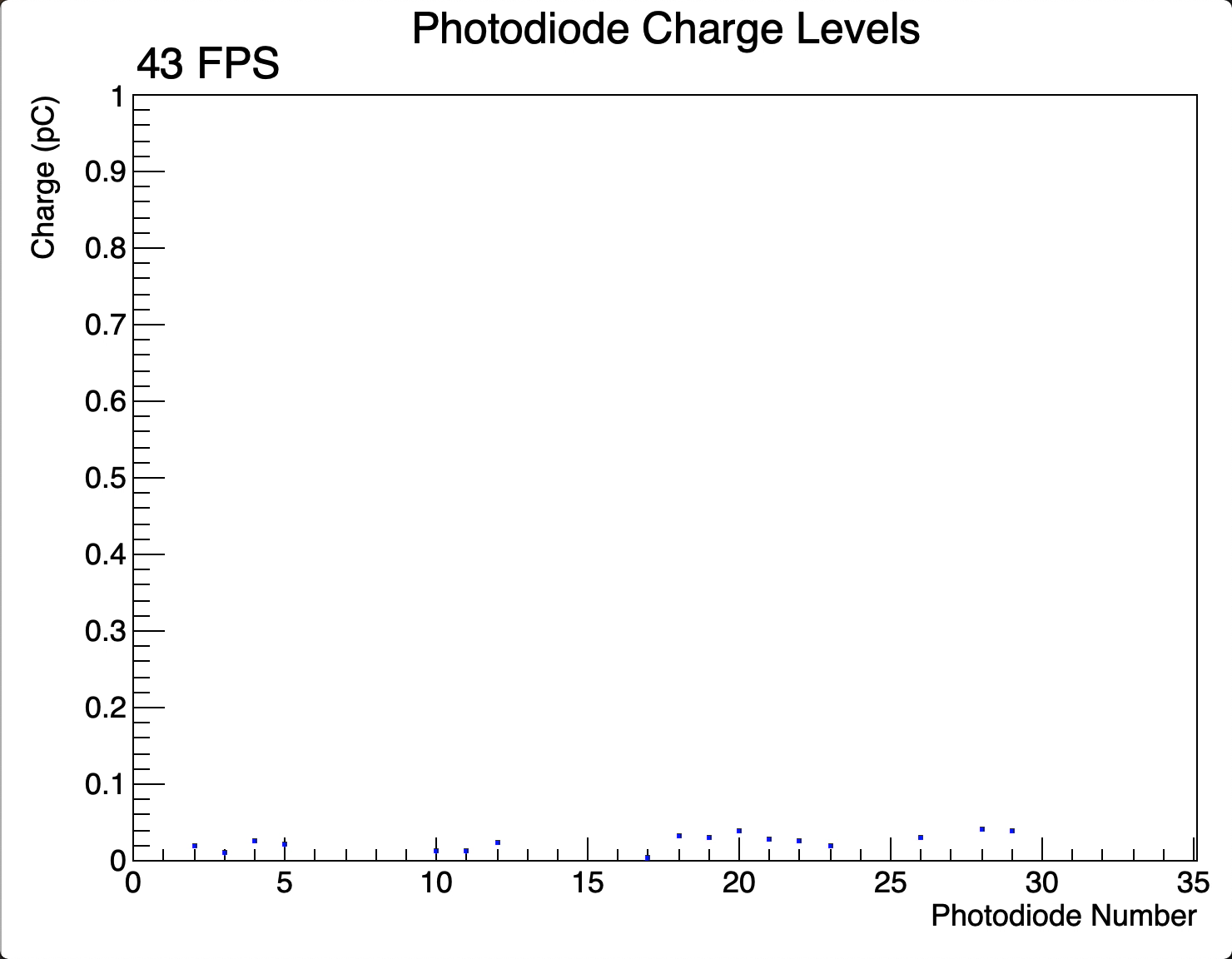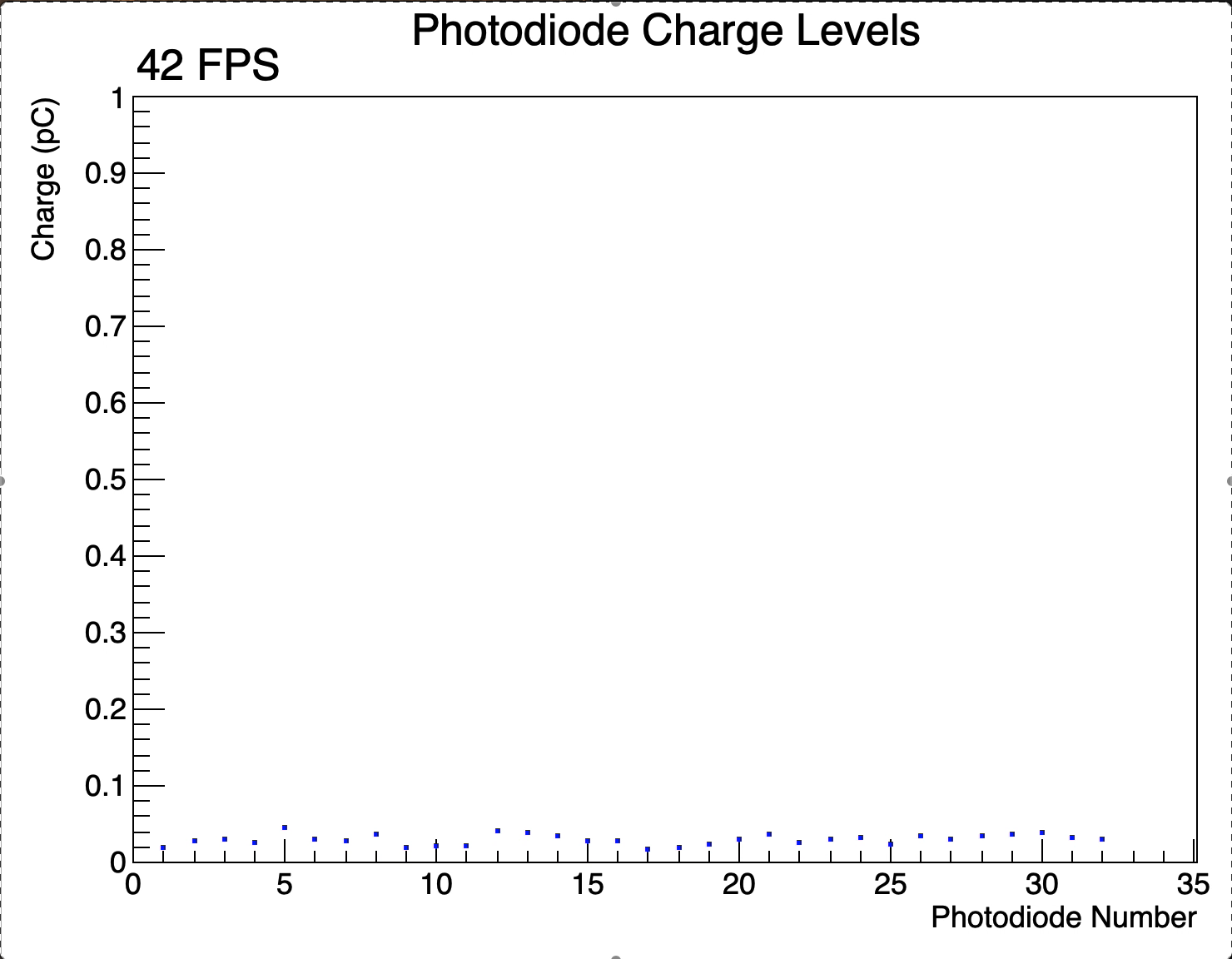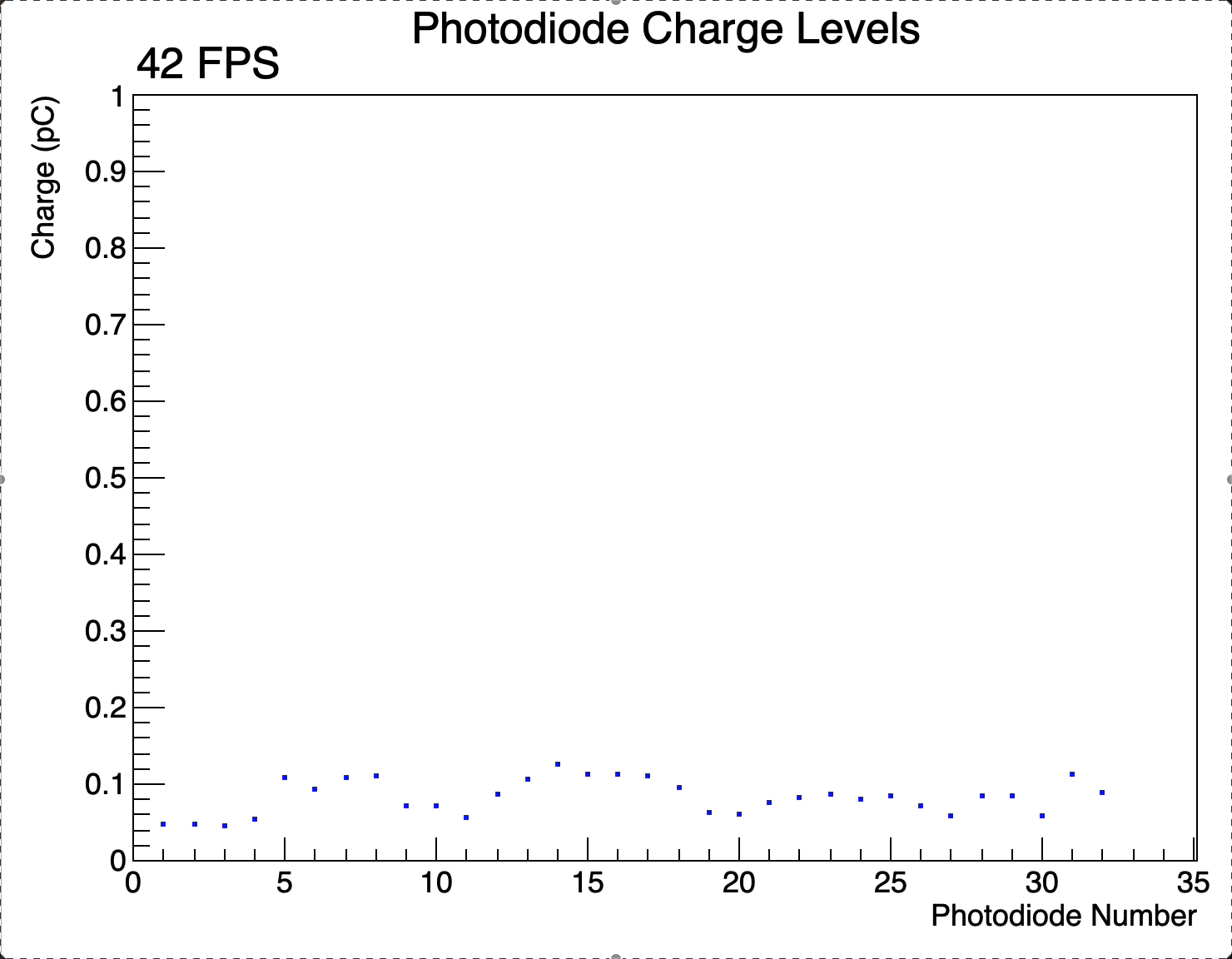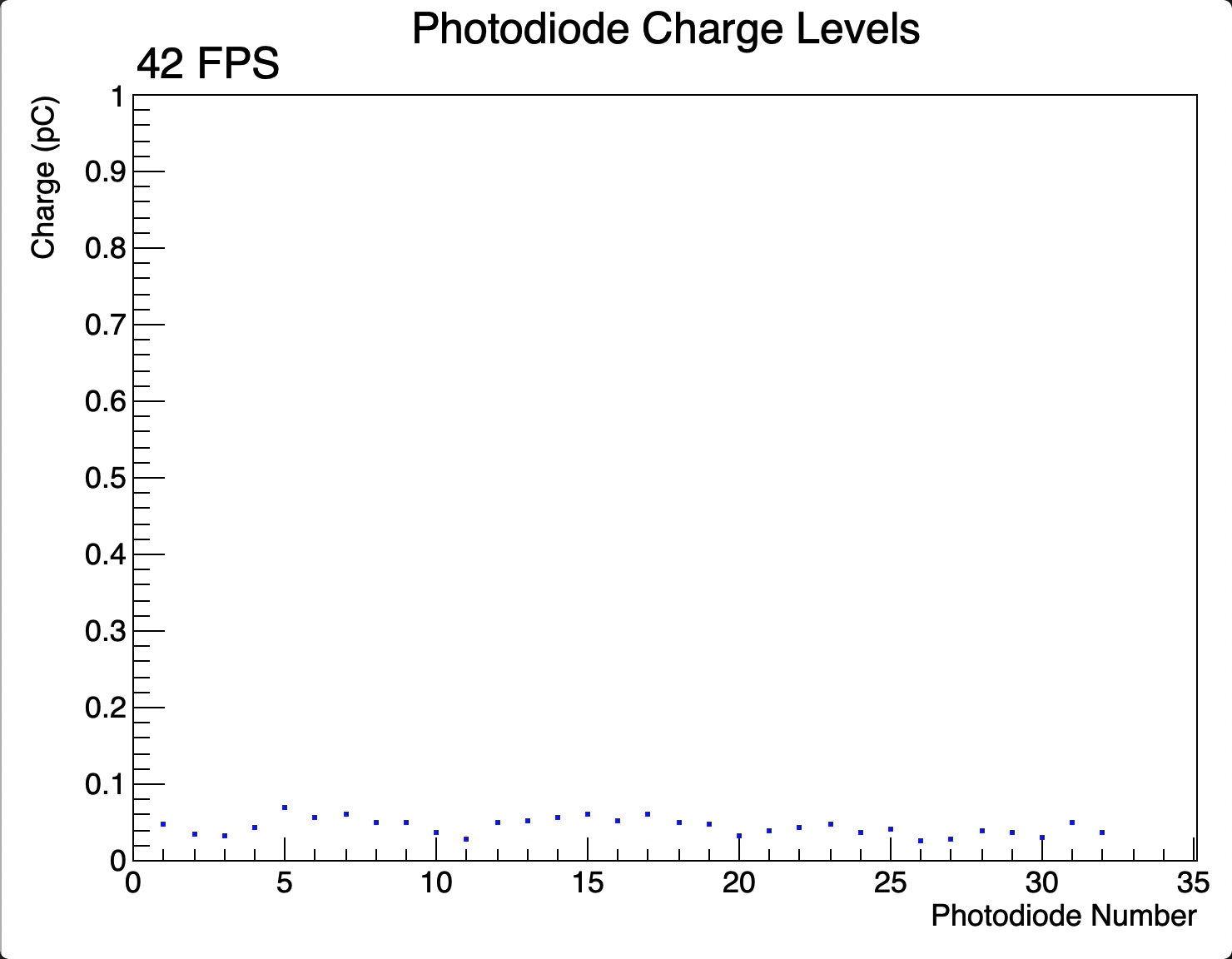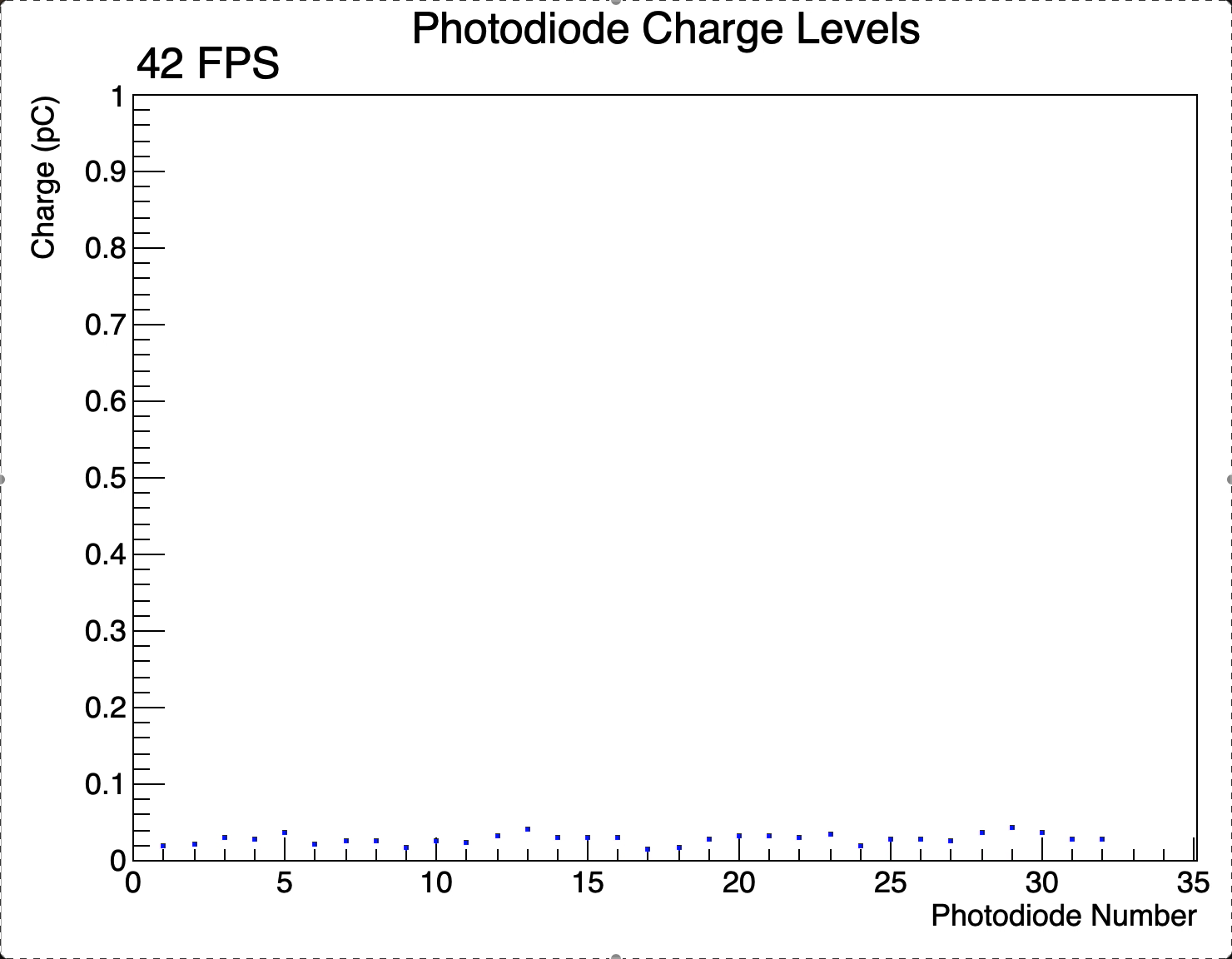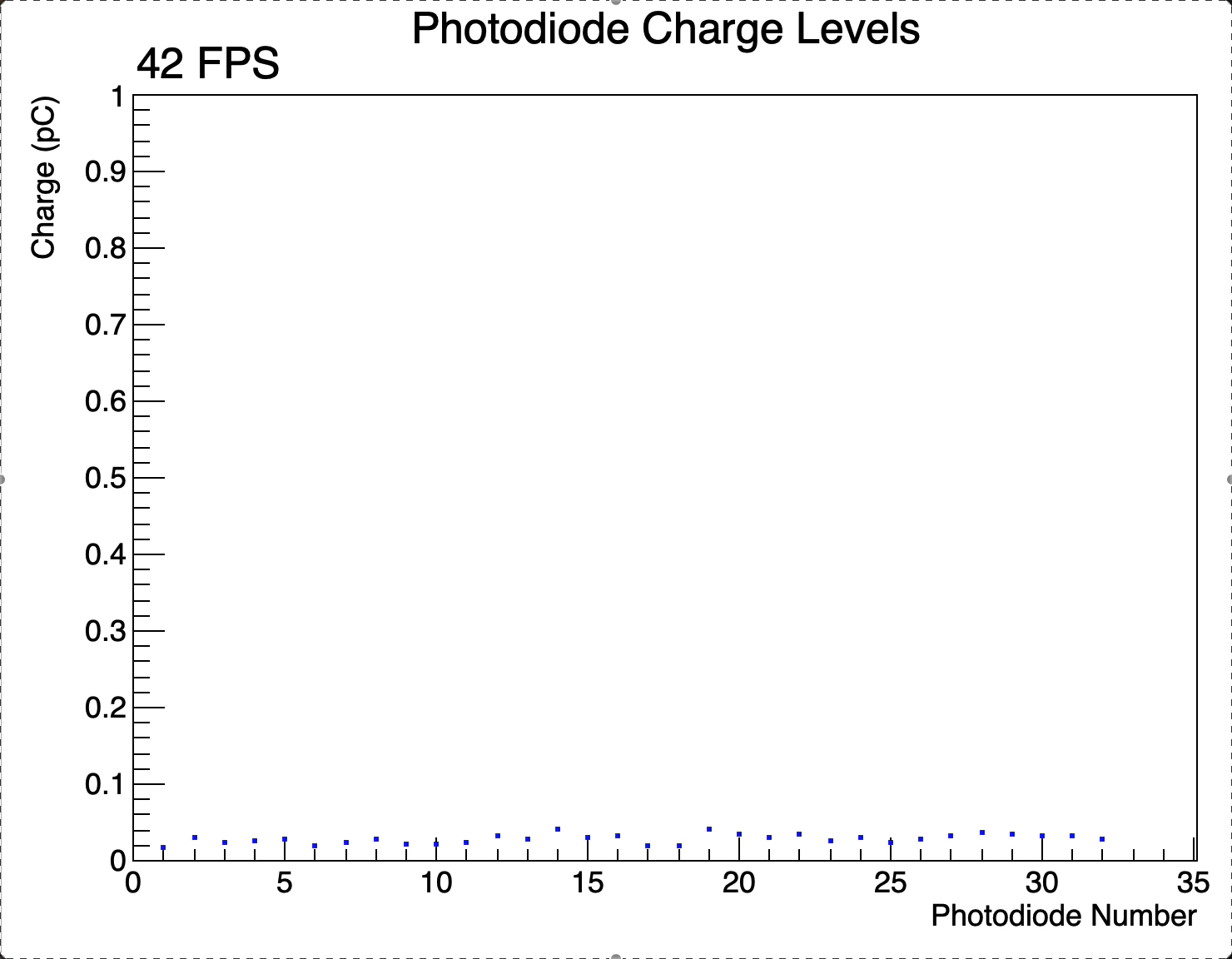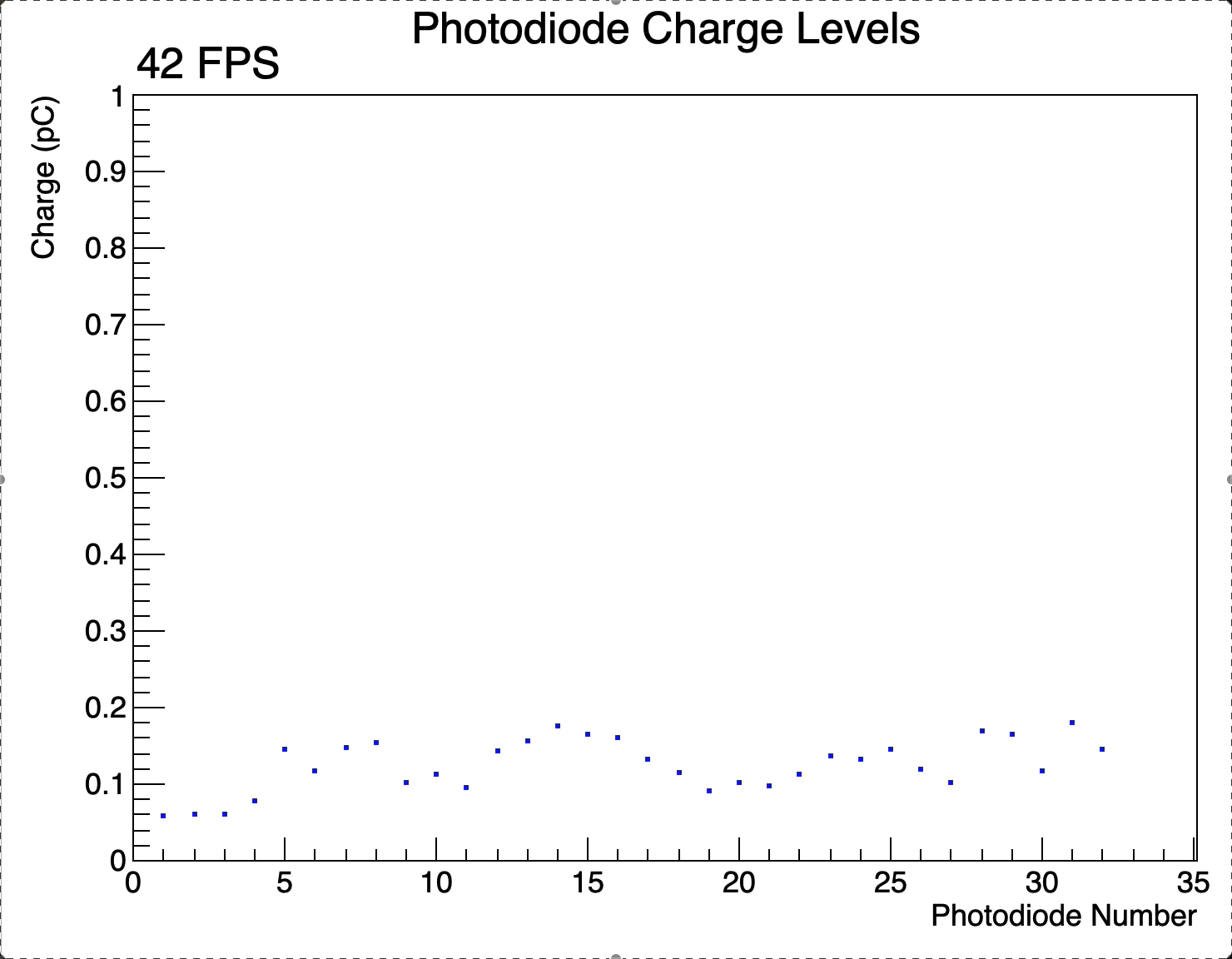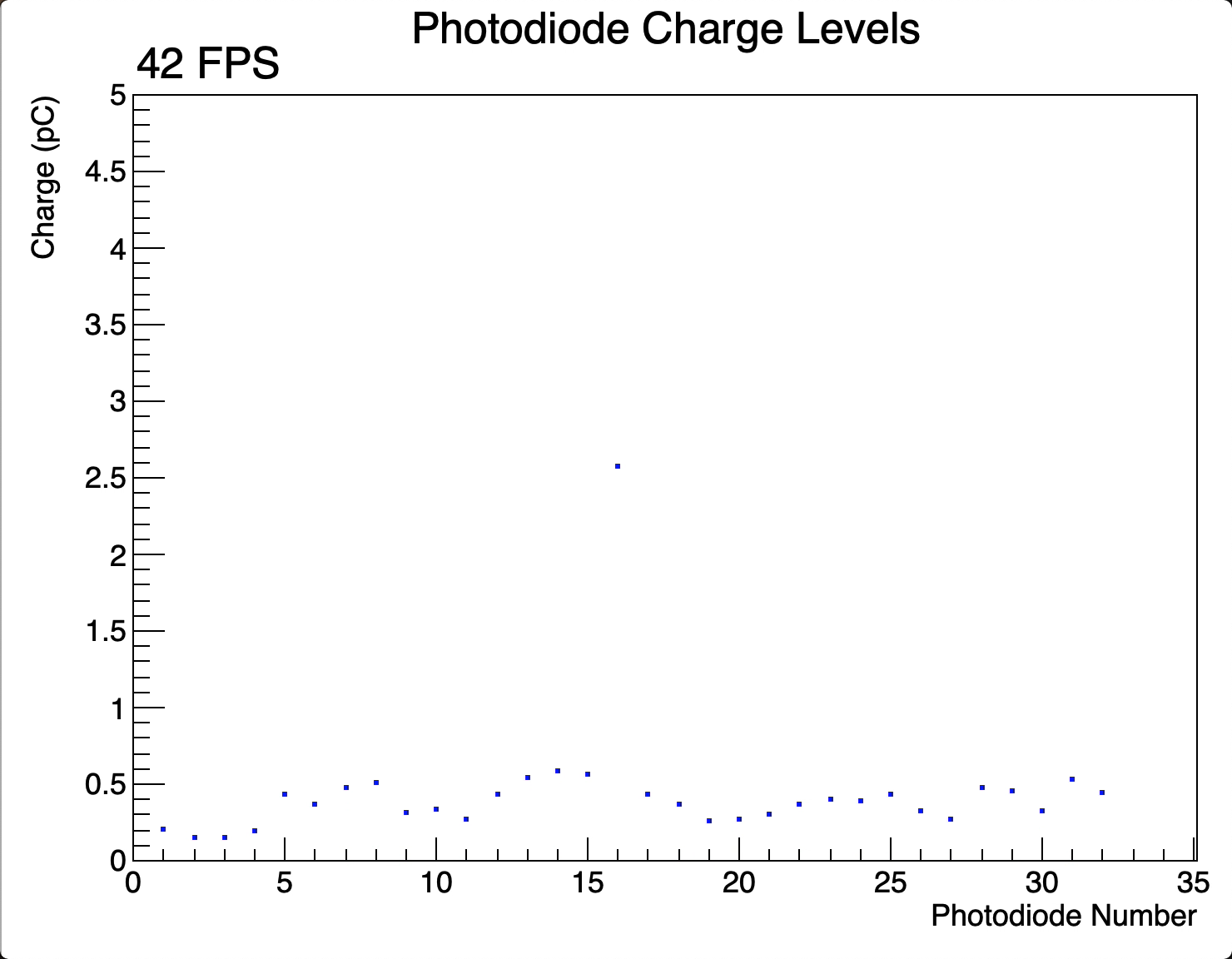Proton Calorimetry/Experimental Runs/2021/Apr22
Noise tests of UCLH beam test setup in D109/D27.
Aim: Investigate source of external electronic noise observed at UCLH by measuring dark noise in lab/office with CMOS sensor turned off/on.
Notes
- Test 2 DDC232 boards coupled to scintillator stack.
- CMOS sensor coupled to scintillator stack on perpendicular face.
- Both CMOS sensor daughter board and DDC232 Nexys Video board in detector enclosure.
- In all runs, an integration time of 170us is used.
- Video steps through individual consecutive acquisitions.
- Histogram of one photodiode also provided. Expect to see clean gaussian shape if no external noise is being picked up.
- Note the absolute value of the y-scale, which differs in some clips.
Videos and thumbnails saved in /unix/www/html/pbt/wikiData/movies/DDC232/210422
| Run | Description | Histogram | Video |
|---|---|---|---|
| 1 | Rotation of boards followed by swept covering of a few photodiodes in turn with black cloth. Boards initially facing downwards but rotated upwards to expose to room lighting. Sweep begins around 20s mark. Note that there is no mirroring and both boards behave as expected. | 3, 1 | |
| 2 | Rotation of boards followed by swept covering of a few photodiodes in turn with black cloth. Boards initially facing downwards but rotated upwards to expose to room lighting. Sweep begins around 10s mark. Note similar behaviour to above. | 3, 4 | |
| 3 | Rotation of boards followed by swept covering of a few photodiodes in turn with black cloth. Boards initially facing downwards but rotated upwards to expose to room lighting. Sweep begins around 5s mark. Note that channels 1-16 show no output as they have been replaced with resistors; also, there is no mirroring. | 3, 2 | |
| 4 | Rotation of boards followed by swept covering of a few photodiodes in turn with black cloth. Boards initially facing downwards but rotated upwards to expose to room lighting: boards rotated repeatedly to examine signal dropouts on board 4. Sweep begins around 47s mark. Note that the mirroring is the lowest of the photodiode pairs on boards 1 and 4. Note also that very noisy signals and signal dropouts are seen on board 4 (photodiodes 1-16) and that this is not replicated on board 1; so whatever is causing this noisy behaviour does not contribute to the mirroring. Compare this to run 2 above where these noisy signals and dropouts are not seen. | ||
| 5 | Rotation of boards followed by swept covering of a few photodiodes in turn with black cloth. Reording of boards from run 4 above. Boards initially facing downwards but rotated upwards to expose to room lighting. Sweep begins around 25s mark. Note that the behaviour is similar to run 4 with board 4 still noisy and that this noise is not mirrored but that the low signals are mirrored between boards 1 and 4. | ||
| 6 | Swept uncovering of each photodiode in turn. Sweep begins near the start of the video but it only seen in the signals once board 1 is fully uncovered and board 4 starts to be uncovered. Mirroring appears to be connected to lowest output, not largest, for mirrored pairs. | ||
| 7 | Swept uncovering of each photodiode in turn - in opposite direction to run 6 - followed by board rotation and swept covering with finger. Note that board 4 shows zero output during uncovering due to signal dropouts associated with rotation. Low signals around 1m25s mark are a results of covering photodiodes partially with a finger. | ||
| 8 | Swept uncovering of each photodiode in turn followed by board rotation and swept covering with finger. Repeat of run 7 above but with board reordering. Note that board 4 no longer shows noise when rotated now that its the last board in the chain. | ||
| 9 | Rotation of boards followed by swept covering of a few photodiodes in turn with black cloth. Now includes board 2 with resistor-shorted photodiode connections. Note that neither boards 4 or 2 show any output, corroborating that low values are mirrored despite board 4 being exposed to light. | ||
| 10 | Rotation of boards followed by swept covering of a few photodiodes in turn with black cloth. Reording of boards from run 9 above: note that the behaviour is similar with no output from boards 2 and 4. | ||
| 11 | board rotation and sweep covering of photodiodes | ||
| 12 | board rotation and sweep covering of photodiodes | ||
| 13 | board rotation and sweep covering of photodiodes | ||
| 14 | board rotation and sweep covering of photodiodes |
